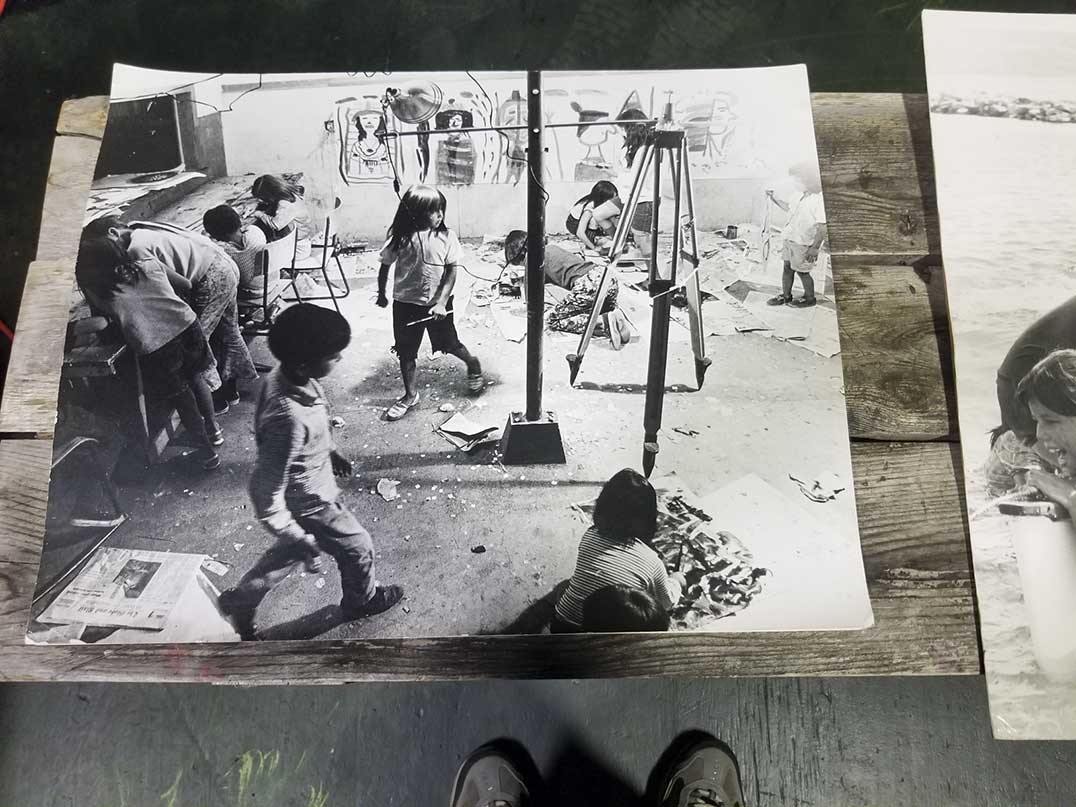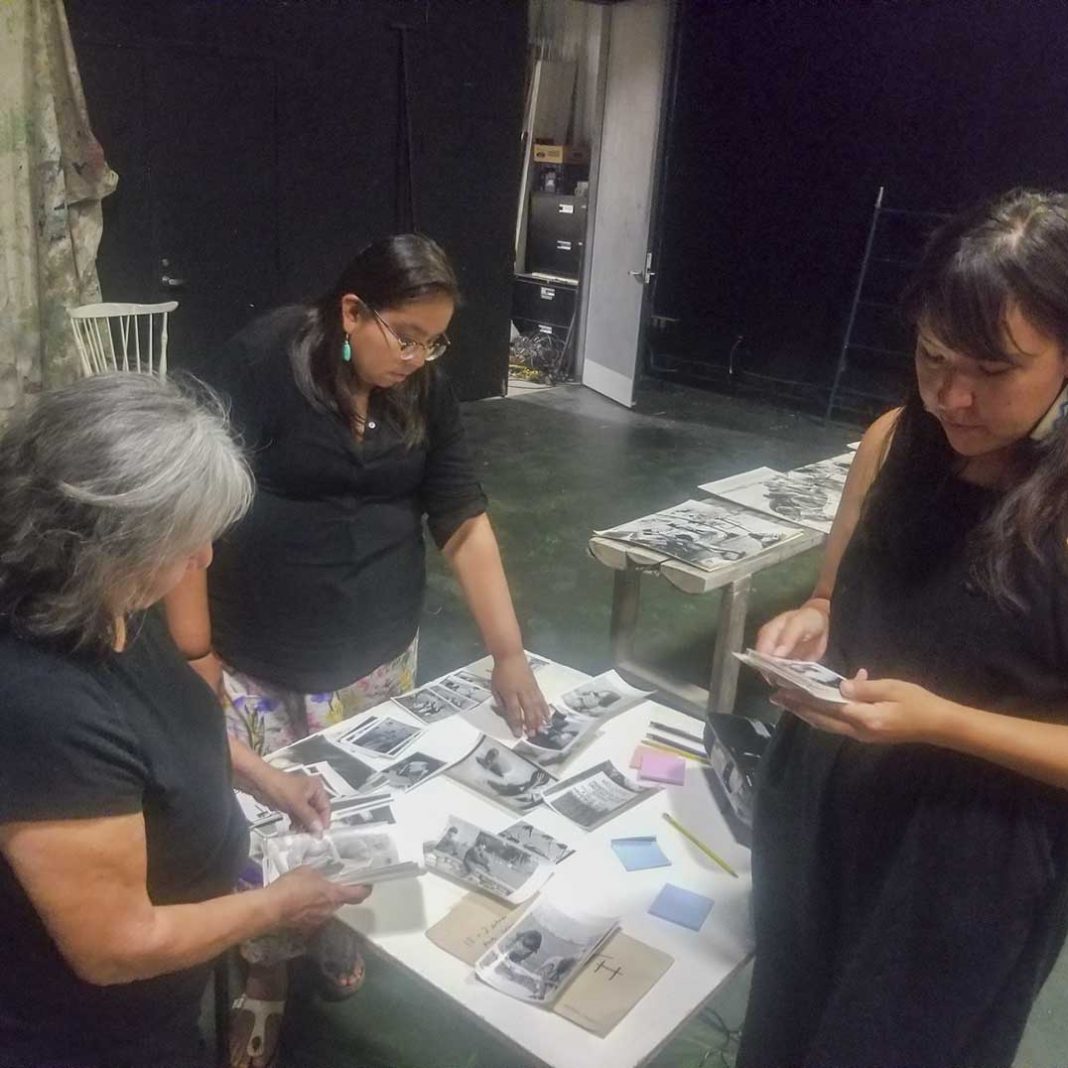Project aims to match artists, photos to their original creators
MANITOWANING – Small groups gathered around the tables covered in photographs and artworks whispering quietly to each other, holding the old photographs up and squinting at the faces contained within. Every now and then an exclamation of recognition rang out as someone made a connection. The Indian Day School repatriation project is part of a long running effort by Dr. Andrea Walsh, associate professor with the University of Victoria and the curator of the university’s ‘Creativity and Resilience in Children’s Art from Indian Residential and Indian Day Schools’ program.
Dr. Walsh curates that exhibition in collaboration with residential and day school survivors and former students who created these works when they were children, or with family members of child creators of the pieces. She has been collaborating on the local project with Laurentian University’s Daryl Manitowabi, Laura Hall and Celeste Pedri-Spade of the School of Northern and Community Studies. Other members of the team include Dianna Nabonquot, Naomi Recollet of the Ojibwe Cultural Foundation and Justice Seidel, who is providing administrative support. Hau-ay-aht First Nation elder and residential school survivor Jeffrey Cook from Vancouver Island is also providing support to the project.
“It has been a really enjoyable experience working with this group,” said Mr. Cook. “We have grown as a group to appreciate each other.”
He noted that a lot of those involved have not been comfortable with public speaking, but that through the project they have found their voices.
“Daryl and I worked closely with Mary Pheasant at Laurentian University back in 2014 when we first brought the collection to the area,” said Dr. Walsh.
Bringing the photographs and artworks back to the community has been made possible thanks to a research grant from Laurentian University.

This project grew out of the conundrum faced by the University of Victoria in 2008, when the University of Victoria’s Legacy Art Galleries was gifted more than 700 paintings created by Indigenous children between the late 1950s and early 1970s. The paintings were created in art classes taught by Canadian artist Robert Aller. Upon Mr. Aller’s death, his family gifted the massive collection of children’s art to the University of Victoria.
The majority of the paintings were created by Ojibwe and Algonquin children who attended summer camps with Mr. Aller that were funded by the Department of Indian Affairs in the early 1970s. Prior to these camps, Mr. Aller volunteer-taught in two residential schools, the Alberni IRS in Port Alberni, British Columbia and the MacKay IRS in Dauphin, Manitoba. Children who attended these two residential schools during the late 1950s and early 1960s created 136 paintings in the collection.
Several of the art camps took place in the Manitoulin region between 1969 and 1970 and the 2014 project held viewings of the photographs and art at the OCF, Wiikwemkoong and Whitefish River First Nation.
The 2011 Truth and Reconciliation Commission (TRC) put out a call for artworks about the residential school experience and legacy. Dr. Walsh contacted the TRC about the newly gifted collection of residential school art and this resulted in a meeting with Justice Murray Sinclair, chair of the TRC. Since then she has worked closely with elders and survivors from the Elders in Residence program through First Peoples House to create a protocol for working with the paintings from the residential schools.
Over the seven years since the bequeathing of the collection it has been on display in exhibitions including the National Museum in Ottawa.
“The question was ‘what do you do with a collection like this?’,” noted Dr. Walsh. The answer that came back through consultation with survivors and their kin was simply to return the works to their creators.
When a photograph is identified by someone visiting the exhibition, that photograph is digitally scanned and given to that individual.
There are a total of 90 paintings involved in the collection created during the period of 1969 to 1970, 60 of which are from Wiikwemkoong.
In addition to the exhibition of the works at the Debajehmujig Creation Centre in Manitowaning, the collection will also be going to the OCF at M’Chigeeng at dates to be announced.





